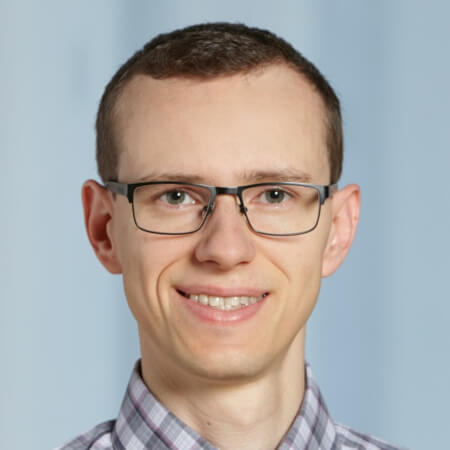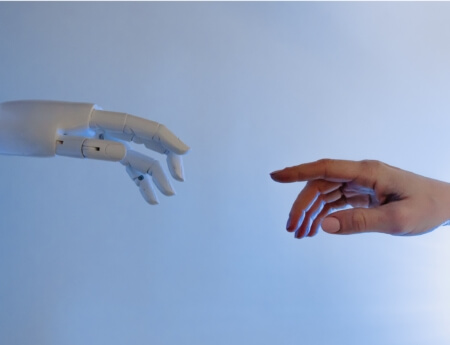GGOS Focus Area
Artificial Intelligence for Geodesy – AI4G
On May 12, 2023, the GGOS Goordinating Board accepted the proposal to establish a new GGOS Focus Area on Artificial Intelligence for Geodesy (AI4G). In general, it will utilize methods from the field of Artificial Intelligence (AI), including machine learning techniques, to improve geodetic observations and products. This new GGOS Focus Area is chaired by Benedikt Soja (Switzerland) together with his vice-chair Maria Kaselimi (Greece). If you are interested to contribute to this new Focus Area, please contact Benedikt Soja.
Chair: Benedikt Soja (Contact: soja@ethz.ch)
Vice-Chair: Maria Kaselimi
General Contact: ai4g@ggos.org

Benedikt Soja
Contact: soja@ethz.ch
Introduction to AI4G
The field of artificial intelligence has seen rapid progress in recent years, with breakthroughs in areas such as natural language processing, computer vision, and deep learning. This progress has led to the development of new AI applications and technologies and has the potential to transform a wide range of industries and fields. AI has become increasingly important in science, with applications in fields such as physics, biology, chemistry, and astronomy. It has become well-established in the neighboring disciplines of geodesy, including climate and weather prediction, space sciences, and remote sensing, helping to improve our understanding and prediction of complex natural phenomena.
In general, AI can help scientists analyze complex data, identify patterns and relationships, and develop new hypotheses, ultimately accelerating the pace of scientific discovery. Geodesy has seen a significant increase in observational data in recent years, for example in the case of Global Navigation Satellite Systems (GNSS) and InSAR missions. Furthermore, auxiliary data used in the analysis of space-geodetic data such as meteorological or environmental models have seen a significant increase in spatio-temporal resolution. Traditional data processing and analysis techniques that rely largely on human input are not well suited to harvest such rich data sets to their full potential.
Recent advances in the development of machine learning algorithms, in particular efficient implementations of deep neural networks, together with a significant increase in computing power, have the potential to facilitate:
• the automation of data processing,
• the detection of anomalies in time series and image data,
• their classification into different categories,
• modeling complex spatio-temporal data,
• and creating enhanced derivate products in geodesy.
For these reasons, there has been a strong increase in research related to AI and machine learning in geodesy, covering various problems, including those mentioned above in relation to geometric space-geodetic techniques, gravity field, and earth orientation parameters, among other topics.
Objectives
(1) Develop improved geodetic products based on AI and machine learning
The Focus Area aims to explore the potential of AI and machine learning methods in improving the quality and accuracy of geodetic observations and products. The objective is to develop new approaches and methods that can help extract valuable information from large and complex geodetic datasets and use this information to create more accurate and reliable products.
Depending on the application, improved geodetic products could have a higher accuracy, resolution, as well as better performance in in real-time or prediction scenarios. This will often involve assimilating data from different sources.
To achieve the above objective, it is important to identify the most relevant and suitable geodetic and auxiliary datasets that can be used for training and validating machine learning algorithms. This will involve selecting datasets that have the right spatio-temporal resolution, accuracy, and other relevant characteristics that can help improve geodetic products.
The Focus Area will also work on designing appropriate machine learning methods that can effectively improve the quality of geodetic data. This will involve exploring different machine learning algorithms, such as deep neural networks, and developing new techniques that can be used to analyze geodetic data.
(2) Evaluate improved geodetic products based on AI and machine learning:
Thorough quality assessment is essential for increasing trust in the products produced with the use of AI, especially considering the “black box” nature of deep learning algorithms.
The Focus Area will compare the performance of different machine learning methods with traditional data analysis approaches. This will involve identifying the strengths and limitations of each approach and determining the most appropriate method for a given application.
AI4G will pay particular attention to the accuracy, precision, and reliability of the results produced by machine learning algorithms. This will involve developing new techniques for error assessment and uncertainty quantification, and identifying potential sources of errors in the results.
Implementation – Study Groups
To achieve the objectives mentioned above, AI4G plans to implement at least three joint study groups, tackling specific topics related to the use of AI in geodetic observations and products. Concretely, we plan to establish study groups that will focus on GNSS remote sensing, gravity field and mass change determination, and Earth orientation parameter prediction.
Study Groups
JSG 1: AI for GNSS Remote Sensing
The first study group will focus on GNSS remote sensing and will investigate topics such as ionosphere and troposphere modeling and prediction, as well as the retrieval of wind speed, soil moisture, and other environmental variables through GNSS reflectometry. More Info …
JSG 2: AI for Gravity Field and Mass Change
The second study group will address the application of AI to improve the determination of the gravity field and the related mass change. The topics that will be covered include the fusion of gravity data with hydrological models, the downscaling of mass anomalies, bridging the gap between GRACE and GRACE-FO missions, and the improved processing of satellite gravimetry data. More Info …
JSG 3: AI for Earth Orientation Parameter Prediction
The third study group will explore the use of AI for predicting Earth orientation parameters. This group will build on the successful Second Earth Orientation Parameter Prediction Comparison Campaign organized by the International Earth Rotation and Reference Systems Service (IERS) and will continue to investigate machine learning for the prediction of Earth orientation parameters and effective angular momentum. More Info …
JSG 4: AI for Geodetic Deformation Monitoring
The fourth study group will explore the use of AI for geodetic deformation monitoring. More Info …
In addition to organizing joint study groups, AI4G also aims to facilitate collaboration beyond these study groups. The goal is to ensure that the methodological progress achieved in these study groups benefits the wider geodetic community. To this end, we plan to organize events such as workshops or summer schools in addition to sessions at scientific conferences to disseminate the findings of the joint study groups. The progress of the Focus Area will be documented on a dedicated website and advertised on social media.
The AI4G will collaborate closely with existing components of the International Association of Geodesy (IAG), in particular the working and study groups of its
commissions and committees, as well as other relevant organizations, including the International Telecommunication Union (ITU) and its Focus Group on AI for Natural Disaster Management (FG-AI4NDM). In the case of IAG, the concrete ties will be defined when the working and study groups for the next four-year term are established following the IUGG General Assembly 2023 conference.




